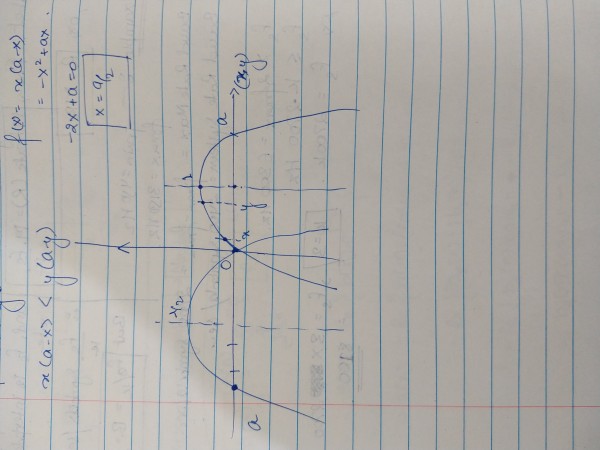Correct answer is option A.
Function being evaluated is f(x) = x(a-x)
The graph will be a parabola opening downwards and cutting x axis at origin and a.
If a >= 2, then the global Maxima point in the graph would be >=1 ( can be found by differentiating and equating to 0).
Now x,y are 2 points on x axis such that 0<x<y<1. Which means x and y are 2 values on the monotonous increasing part of the graph from 0 to 1 on x axis.
In this part of x axis, since y > x always, therefore, x(a-x) < y(a-y) always.
I am providing the rough work I have done in order to solve this question. I drew 2 graphs one for positive a and one for negative a. I hope you will understand else please ask to clarify.
